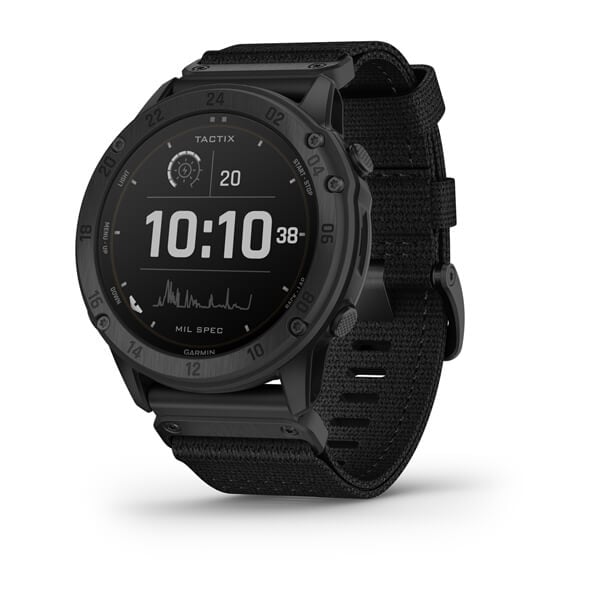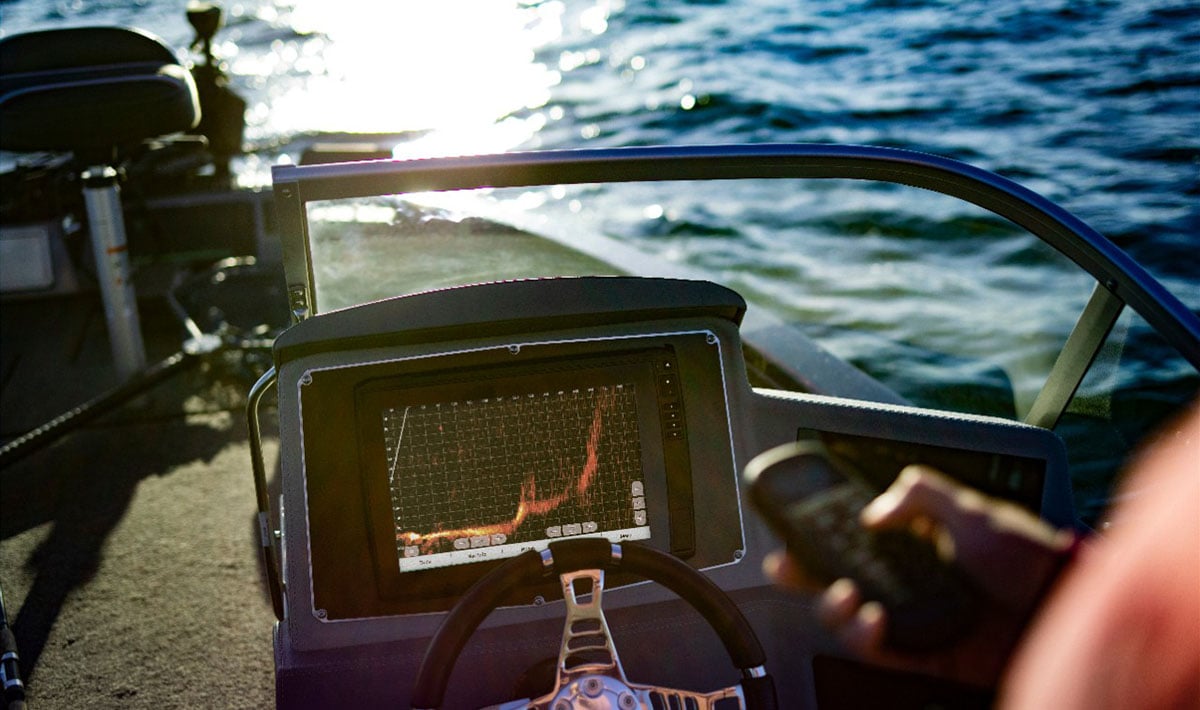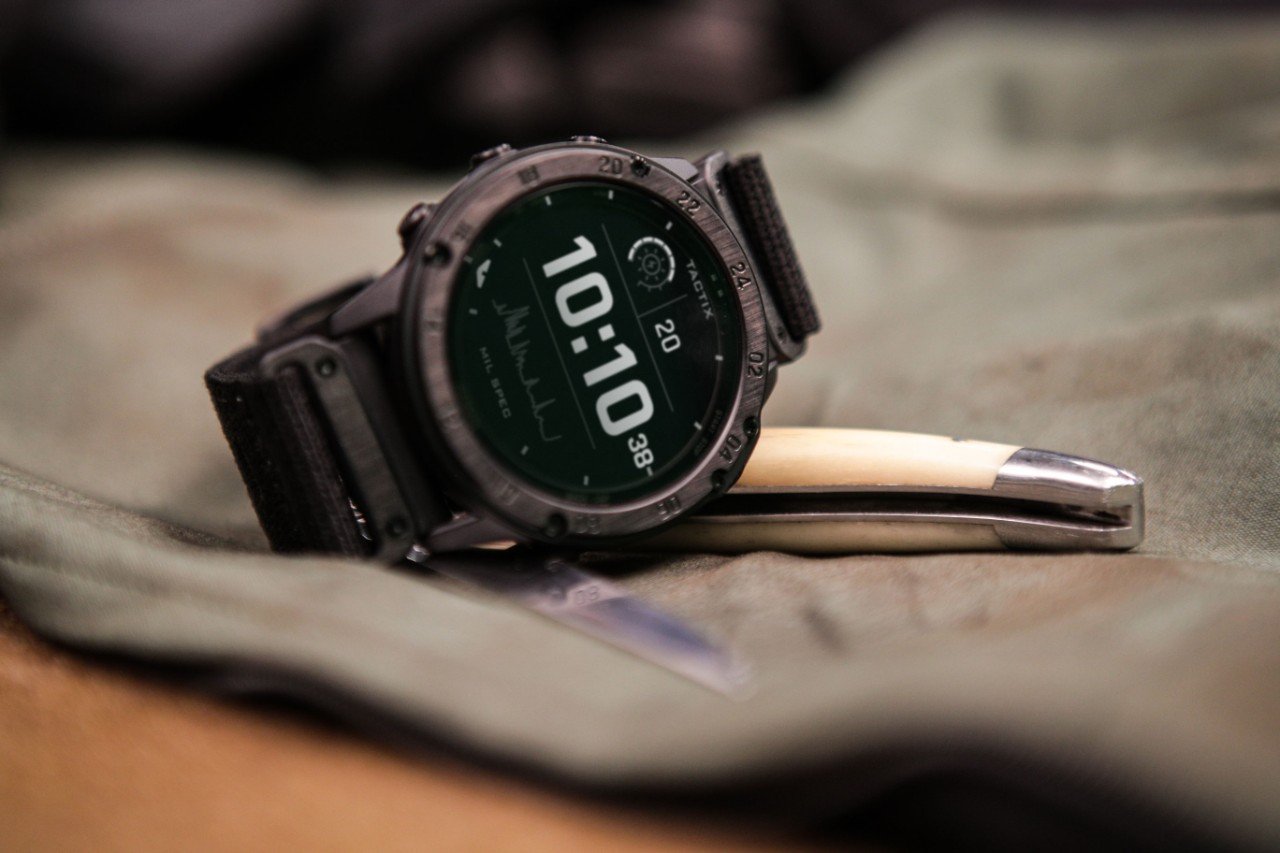
Extreme Long-range Shooting: What is it, why do people do it and how does Garmin help?
By Garmin outdoor recreation specialist Rehan Nana
“There are a lot of scientists and engineers who participate in extreme long-range shooting competitions,” Greg Glass, a Garmin engineer and long-range shooting enthusiast, told me recently on a cold day at the range. “When you think about it, it’s really just one very large math problem, so it’s an engineer’s dream.”
If ever there was a time a metaphorical light bulb flickered on above my head, this was the moment. Over the past few years within the hunting and outdoor community, there has been a significant rise in extreme long-range (ELR) competitions. While I was aware how popular ELR has become, I didn’t understand why that was so until Greg unraveled that mystery.
Like any competition or challenge, ELR competitions take determination, knowledge and the right tools.
For those of you unfamiliar with this incredibly fast-growing sport, here are some things you should know about the sport and how technology, like Garmin’s tactix® Delta Solar with Applied Ballistics, help individuals in competition.
What is ELR?
The sport of extreme long-range (ELR) shooting is defined as shooting stationary targets beyond the 1,000-yard mark, generally starting around 1,500 yards. This is typically done in practice or competition.
However, competition shooting is nothing new. If you look through the pages of history, people have always been fascinated with the challenges of accuracy of their projectiles. We grew up hearing about how great of a shot Robin Hood was, but there is actually some basis for that type of folklore. According to the Washington Post, the first shooting clubs were formed by German-speaking peoples as early as the 13th and 14th centuries.
The Washington Post continued that, in the U.S., some of “the first forms of competition in this country were ‘rifle frolics’ or ‘turkey shoots,’ with prizes being beef, turkey or other food items. Matches were usually one-shot affairs fired from a distance of 250-330’ from either the standing or rest shooting positions.”
As technology increased from smoothbore to rifled barrels, so did the distances of these competitions. Today there is an annual competition called “King of Two Miles,” where hundreds of people make their way to the New Mexico desert to try to put a copper bullet onto a 36” target two miles away.
However, this type of technical precision isn’t accomplished by Grandpa Joe with his trusty old Winchester. These are highly specialized teams of dedicated people who all have different data-collecting responsibilities that culminate when one member of the team pulls a trigger and tries to send a bullet down range. How far down range? Crazy far down range, if you want to be exact.
What makes ELR so challenging?
Most people understand rifles within the context of hunting or military applications, not competitive distance shooting. In Missouri, where I am writing this, a standard deer hunting shot is going to be taken between 75 and 200 yards. At this distance, given the speed of the bullet, there aren’t a whole lot of external factors that will create changes in that bullet’s trajectory. It’s a pretty straight shot, as they say.
However, as you increase the yardage to 400, 800, 1,000, 2,000 or 2 miles, the small variables, like the speed of the wind and the slowing of the bullet, start to have a compounding effect on the projectile.
Here are a few of those variables that individuals have to consider before they pull the trigger.
- What’s the wind doing? Increased wind can push a bullet off course.
- What type of bullet shape and weight are they shooting? The “drag” of a particular bullet can change flight trajectory.
- What is the air pressure? The higher the air pressure/atmosphere, the increase of the drag on the projectile.
- It takes several seconds for a bullet to travel 2 miles, so … how much is the earth rotating from the time a shot is taken to the time the bullet impacts the target? This drift potential is known as the Coriolis Effect.
Understanding the compounding effect these variables have as you increase the distance of a shot, you can see the need for precision. If you change just one of these variables a minute amount, you can end up entirely off target. So as you increase distance, you need to increase the informational input to calculate the effect different variables will have on that projectile as it travels 3000 fps over the course 3,520 yards or 35 football fields.
Enter tactix Delta Solar with Ballistics
The tactix Delta Solar with Ballistics is one of Garmin’s most advanced wearables. Based on the fēnix® platform, the tactix includes all the outdoor/health/fitness features enthusiasts have come to know and love about the fēnix family. However, it also includes advanced features for military and law enforcement personnel to help them accomplish their mission.
Some of these features include:
- Solar Charging was recently integrated so your watch can stay on and performance-ready longer. Battery life in smartwatch mode is up to 21 days — or up to 24 days with solar charging.
- Night Vision compatibility allows the user to easily switch between daytime view and nighttime view with a screen that can be read by night vision goggles.
- Stealth Mode: While keeping the watch operational, stealth mode stops storing and sharing your GPS position and disables wireless connectivity and communication.
- Kill Switch: If security becomes an issue, the kill switch wipes the device of all user memory.
- Jumpmaster Mode: This feature works to calculate high-altitude release points according to military guidelines and helps to navigate you to your objective once you’ve jumped.
- Dual-format GPS: GPS coordinates and built-in topographic maps offer unparalleled situational awareness.
- Projected Waypoints: Allow users to set and save remote geo positions to be used later for navigation.
How does tactix Delta with Applied Ballistics help ELR?
The mission of Applied Ballistics is “to be a complete and unbiased source of external ballistics information for long-range shooters.” Their ethos is the belief in the scientific method and promotion of mastery through understanding of fundamentals.
Think of them as a giant research laboratory that also doubles as a giant library, but for bullets.
Day in and day out, they test the different qualities of different bullets, based on brand, caliber, weight, etc., and how different external factors will affect that bullet’s trajectory. They house all of this information in an interactive digital platform where individuals can easily input different variables (bullet, brand, caliber, etc.) as well as external factors (wind, distance, temperature, etc.) and get what’s known as a “Range Card,” which provides easily digestible aiming information, known as “aiming solutions” for competitive shooters.
With these aiming solutions, individuals can make necessary adjustments to their equipment or aim point to gain greater accuracy.
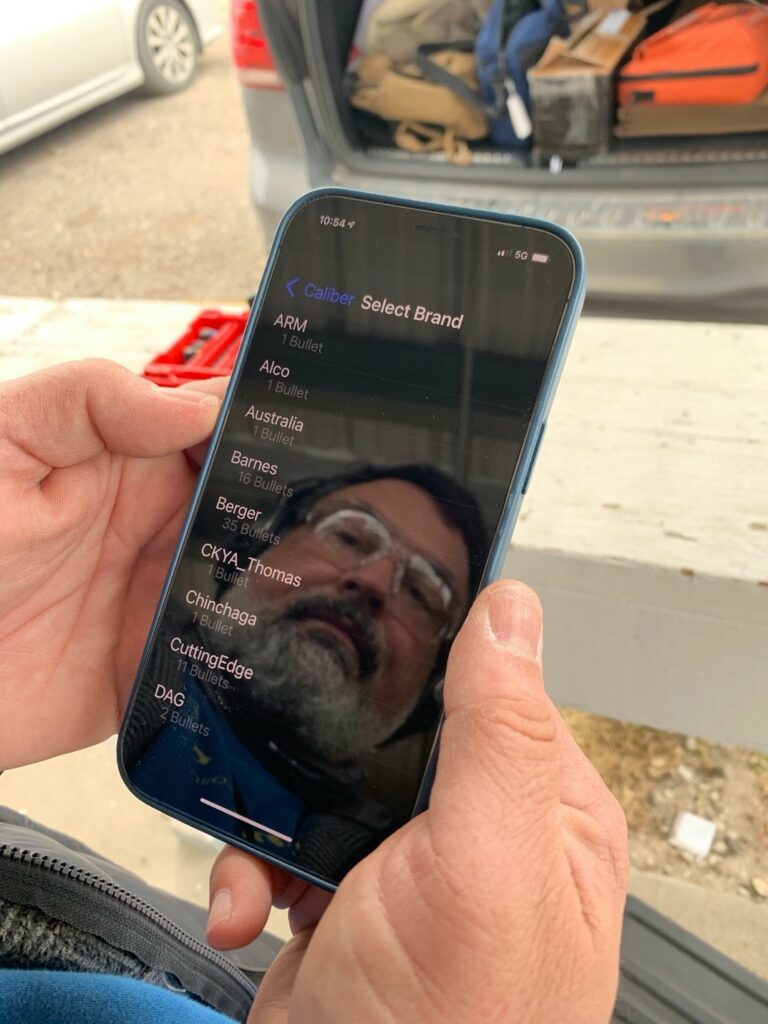
Where things get very interesting is the integration with Garmin Foretrex® 701 and tactix Delta Solar with Applied Ballistics. Thanks to an integration, individuals no longer have to input items into a computer or do longhand equations on a piece of paper.
Within the Applied Ballistic feature on the tactix Delta, individuals can customize the following for output data.
- Quickly edit the range, direction of fire and wind information.
- View their range card to view data for various ranges based on user input parameters. Users can also change field for customized range cards, edit the range increment and set the base range.
- Access their target card to view range, elevation and windage for 10 targets based on input parameters.
- Customize atmospheric conditions for the current environment.
- Customize long-range shooting conditions on up to 10 targets.
- Customize gun properties, bullet properties and output units of measure for their current profile.
Now instead of having to spend extended time doing longhand equations, users can quickly and easily input profile information into the AB Synapse – Garmin app, transfer it directly to their watch, and the aiming solution is provided within seconds on their tactix or Foretrex watch.
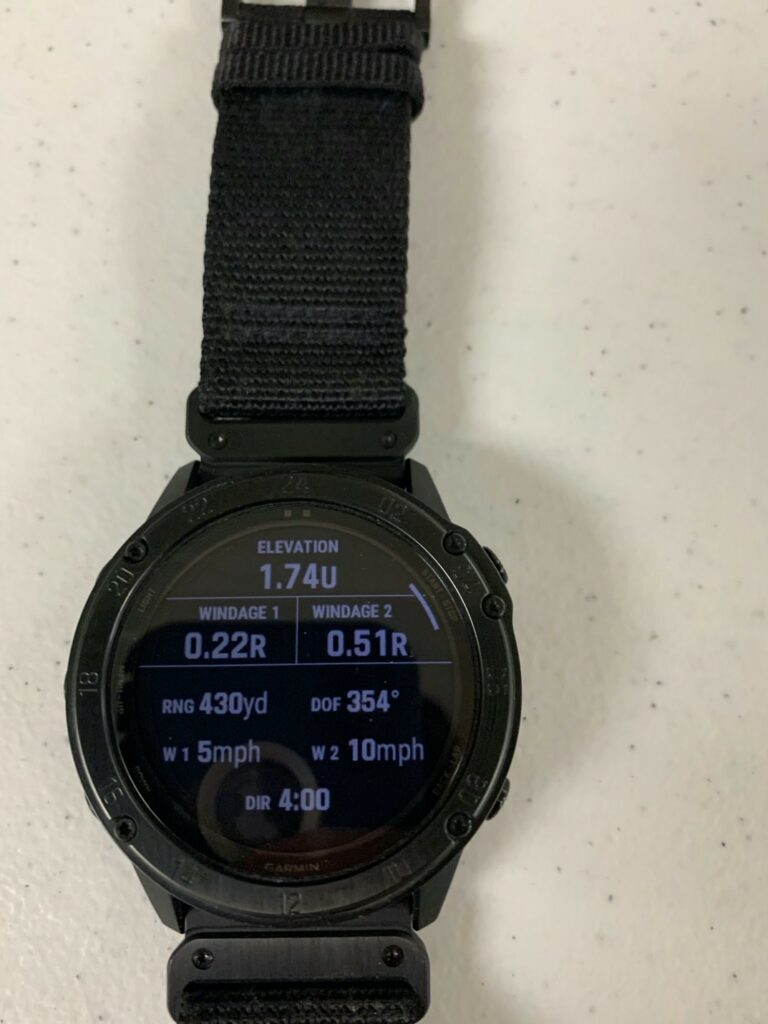
If this sounds simple, that’s because the engineers at Garmin and Applied Ballistics have worked incredibly hard to make it that way, which is the goal of all Garmin products. Help people pursue what they love doing more completely, whether that’s hiking, hunting or competition in long-distance marksman tournaments.
Note: The recently released AB Synapse – Garmin app allows you to create ballistic profiles and send them to your Garmin tactix Delta Solar with Ballistics watch. It has full access to the Applied Ballistics Bullet Library, including all CDMS and PDMS for profile creation. In addition to installing the mobile app, you’ll need the latest software for the watch, which can be updated using Garmin Express™ from your computer. The required software version is 15.20.
Lastly, what does this mean for a hunter?
While in Missouri, I may not typically have a shot more than 200 yards, in many parts of the country a hunter can take shots at further distances, and the practical understanding of performance of our gear is becoming increasingly important. As ethical hunters, we owe it to the animals we pursue to offer a swift harvest. As we practice and get sighted in for the season, the increased knowledge of our firearms and bullets provided by Applied Ballistics and Garmin wearables can provide additional information about how our equipment will behave in the field.
And if you decided you want to try ELR competition in the off season, you’ll have the tools to get started.
But, hey, even if you just want to go play a round of golf or go skiing, tactix Delta can help you with that too.
